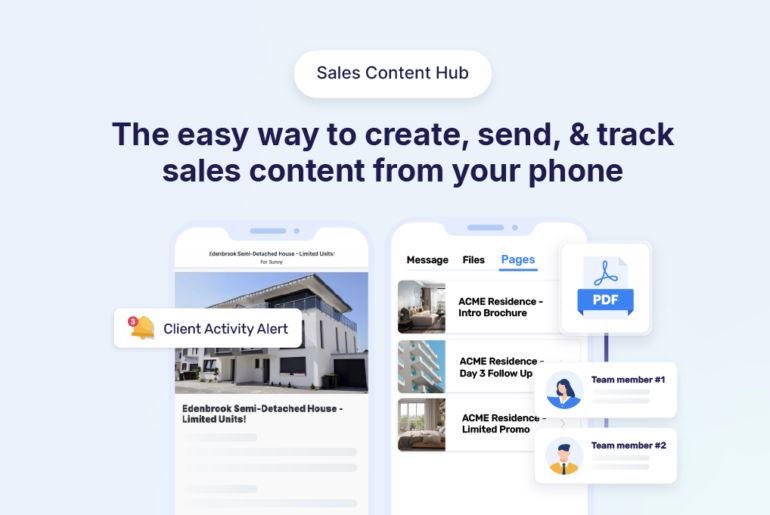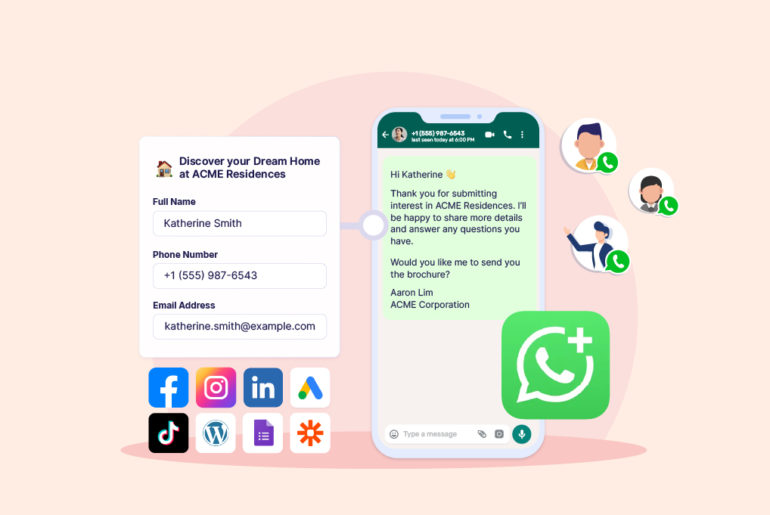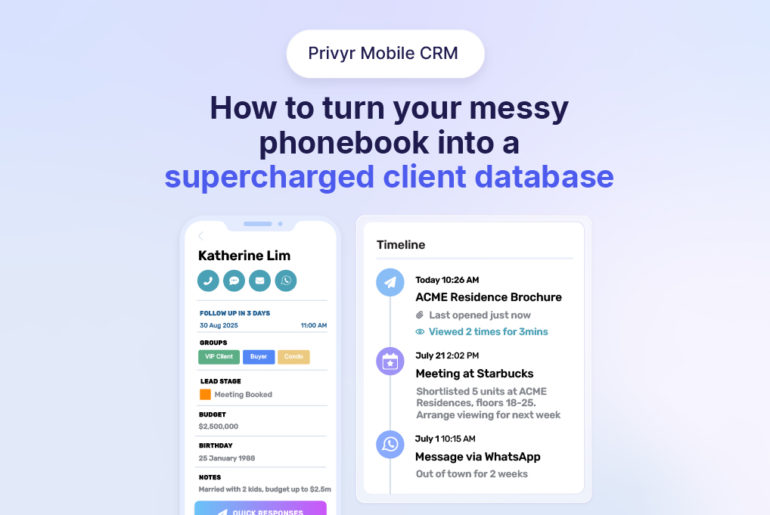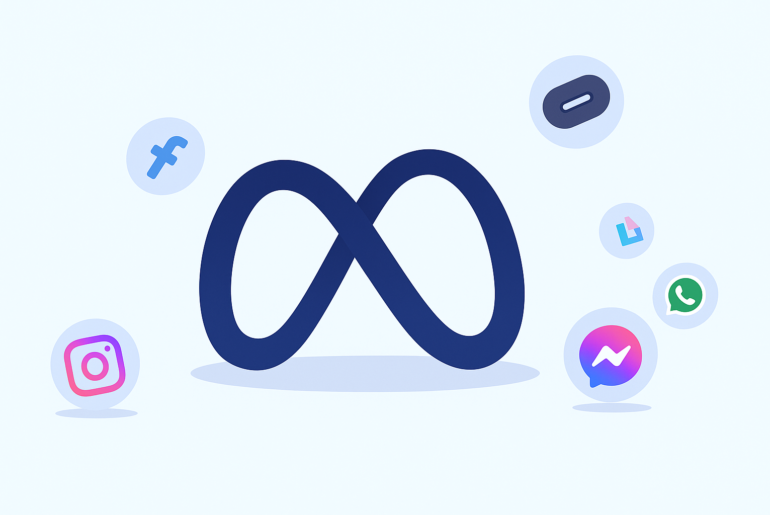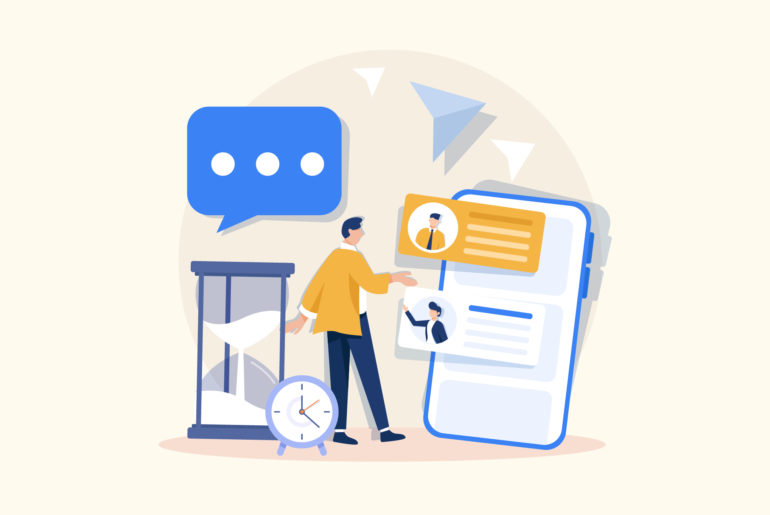Ever wondered how private bankers, bespoke jewellers, or even luxury real estate agents ensure that their clients choose them, and keep on choosing them?
These businesses often deal with high-net-worth individuals who demand the absolute best service, so they must deliver great customer experiences throughout their sales process to stand out from their competitors.
The key to their success is customer experience personalisation, done efficiently, which goes beyond simply addressing a lead by their name in every follow up.
There’s tough competition out there, and you may feel the same way about your own business. Even if you’re not selling a premium product, most consumers nowadays expect premium service before deciding to buy from you.
In this article, you’ll learn how you can also provide an amazing customer experience, even as a small business or solopreneur with limited time and resources.
Overview
- What does it mean to personalise the customer experience?
- How to deliver amazing customer experiences as a small business
- Summary
What does it mean to personalise the customer experience?
Personalisation in customer experience refers to the process of customising your messages, offers, and services according to a potential customer’s unique needs and preferences.
Here are some key components in the customer experience, which you can (and should) personalise:
- Your first outreach message, and subsequent follow-up messages.
- Offers or new products that are relevant to specific leads.
- Gifts or greetings for festive seasons, special occasions, or milestones.
- Your after-sales follow up.
Before you press the send button, you should consider a person’s likes, dislikes, history, and buying journey. Personalisation often sets the stage for great conversations that bring you sales AND repeat customers. It’s best to avoid using generic scripts and offers if you don’t want to come across as spammy.
However, as a small business, you may feel like you don’t have enough time or resources to customise every aspect of your sales process. You might be able to personalise your outreach for a handful of your “top-rated” leads or customers, but it’s hard to stay consistent with every single person who comes through.
Luckily, there are ways to provide a great experience for all your leads and customers through personalisation, without giving yourself ten times the workload. You only need an efficient approach to manage your leads, your clients, what you know about each of them, as well as a faster way to contact them.
How to deliver an amazing customer experience as a small business or solopreneur
Give your customers an amazing experience, and they’ll buy from you, keep buying from you, and maybe even refer you to their network. That’s the goal. But how do you manage this when you’re just a one-person team?
Here are 3 simple steps to start providing great customer experiences and manage personalisation efficiently.
1. First, organise your leads and customers into different groups.
The most basic form of personalisation, aparting from addressing a customer by their name, is sending them content or promotions that are relevant to them.
You can tell whether or not a message you want to send is relevant by being aware of their interests or their journey in the buying process. And the easiest way to know this is to sort your contacts into different groups that represent a stage or interest that they share.
Don’t worry, this doesn’t even have to be a complicated system. In fact, you should only start with a handful of groups so that it’s still manageable to create targeted messages, and you don’t have to create 20 different messages for 20 different target groups.
Keep your customer groups lean and simple. For example:
- Differentiating your contacts based on whether they have bought from you or not, using tags like “Customers” for paying customers and “Hot Leads” for leads who have talked to you, are very on target, but have not converted.
- Tagging your contacts based on the type of product they expressed interest in (e.g. high-rise vs landed property).
Once you do this, you’ll have an easier time ensuring that they only receive content and offers from you that they find interesting, which greatly enhances the customer experience. It’s much better than them receiving a generic message from you that reads like spam, and then deciding to block you altogether.
💡 Pro tip: Try using a CRM tool like Privyr to tag or organise your customer database instead of using a spreadsheet, which is tedious to update and access from your phone (where you will be doing most of the contacting work).
2. Every time you interact with a lead or customer, record one or two interesting details you find out about them.
The more you know about a customer, the easier you can tailor your messages and offers to them. Some might ask: But how can I possibly remember everything about everyone? You can start remembering everything about any lead or customer by doing this one simple thing:
Whenever you get on a phone call with a customer, or talk to them on WhatsApp, write down one or two unique details about them after the conversation ends. The details you’d want to record are those that may be important in personalising the content of your subsequent follow ups.
For example, during your conversation, the customer might have:
- Shared about their buying preferences and motivations (e.g. they only want to buy high-rise properties for investment purposes; or their budget is below $800k).
- Talked about something that’s happening in their personal life, such as an upcoming anniversary or their child’s graduation.
- Mentioned an upcoming family vacation.
Even if they don’t buy from you today, you can seize the next opportunity to contact them about a new product or offer that you know is relevant to their interests. For instance, you could later suggest Photo Canvas Prints of their favourite vacation photo as a thoughtful gift. Better yet, you will have the perfect opening for your next follow up, even if the follow up happens months or years later. Just start your message with what you learned about them in your last interaction.
Your follow ups will instantly become less spammy and more personalised, through the simple act of knowing and showing that you remember what a customer had previously said.
💡 Pro tip: Ideally, you should write down these notes on each customer in a centralised space, such as a mobile CRM tool like Privyr. This way, you can easily add notes for each contact and quickly access this information when needed. You can also avoid accidentally losing this data as you accumulate more leads over time.
3. Create templates for all your key touchpoints, and personalise them before sending.
You might not be able to prepare a response for every situation, but you can plan ahead for all your key touchpoints and frequently asked questions. Create a script for these situations, and leave some space within for personalisation – kind of like filling in the blanks. This is where you can add the details you’ve recorded about the lead in the previous step.
A well-timed reply or follow up can instantly improve your customers’ experience and impression of your business. Nobody likes to wait, especially when they’re actively seeking information from you.
However, many salespeople and small business owners find that they don’t have the time to personalise their responses for different customers, even if they have prepared template messages ahead of time.
As a result, they usually choose the “fastest” option of copy-pasting the same scripted response or follow up for everyone. It might be fast, but it’s as far away as you can get from personalisation in customer experience.
💡 Pro tip: Create and save your template messages in the Privyr app, where you can also add notes about a lead or a customer. This way, you’ll have all the information you need saved in one place for easy sending AND easy recall of key information about a lead you can use to instantly personalise the templated response or follow up.
Sure, it takes one second to send a generic script without any personalisation, and that’s fast. But it only takes a couple of seconds more to add that layer of detail that gives you an instant human connection to a customer, or a lead you’ve been working hard to close. This is how you gain an advantage over your competitors.
Here are two ways you can send personalised content efficiently via Privyr:
Summary
Providing great customer experiences as a small business boils down to two things: being responsive and being human.
Your interactions with a customer shouldn’t make them feel like they’re just another sales target for you. And people can always tell if a message they received is the result of a bulk-sending campaign.
When a customer feels that you truly hear and understand them, they’re significantly more likely to choose you and stay loyal to you, even if your competitors have a more enticing offer.

